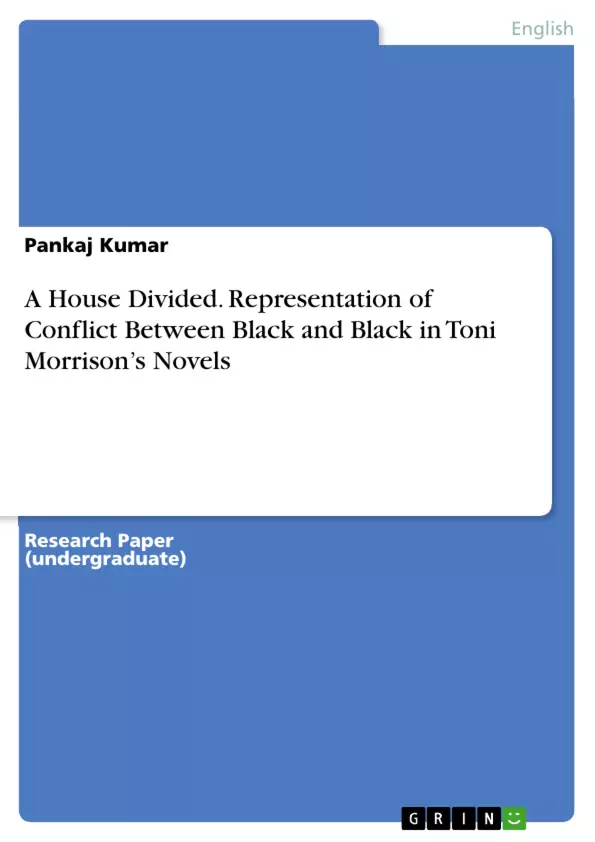African-American novelist Toni Morrison is a writer deeply concerned with the issues of race, class, gender, and sexuality. Her novels inquire into the condition of people who have been subjected to different types of oppression. All her novels deal with the condition of the oppressed. My investigation will therefore focus upon how Morrison uses narrative technique to show oppression of black people by people of their own community. My paper will examine the discrimination of blacks by blacks as represented in the following novels; The Bluest Eye (1970) Song of Solomon (1977) and Tar Baby (1981). In these novels, Toni Morrison portrays the black community with reference to the travails faced by black people because of their blackness as well as the attitudinal class differences and social distinctions within the community. Her novels deal not so much with the homogeneity of shared suffering within the black community but with various orders of differences between the black themselves. [...]
Inhaltsverzeichnis (Table of Contents)
- A HOUSE DIVIDED; Representation of Conflict Between Black and Black in Toni Morrison's Novels
- The Bluest Eye
- Internalized Racism
- Class Conflict
- Social Pressures
- Song of Solomon
- Blackism and Class Difference
- The Well-to-Do
- Decent Hard Workers
- Milkman's Struggle for Acceptance
Zielsetzung und Themenschwerpunkte (Objectives and Key Themes)
This paper investigates how Toni Morrison uses narrative techniques to depict the oppression of Black people by members of their own community. The focus is on the discrimination of Black people by other Black people as represented in three of Morrison's novels: The Bluest Eye (1970), Song of Solomon (1977), and Tar Baby (1981).
- Internalized Racism and Self-Hatred
- Class Conflict and Social Stratification within the Black Community
- The Search for Black Identity and the Impact of Historical Trauma
- The Role of Gender and Sexuality in Shaping Black Experiences
- The Complexities of Family and Community Dynamics
Zusammenfassung der Kapitel (Chapter Summaries)
The Bluest Eye
The Bluest Eye explores the devastating effects of internalized racism and societal expectations on Black women. The novel centers on Pecola Breedlove, a young Black girl who desires blue eyes, believing that this will make her beautiful and accepted. Morrison exposes the insidious nature of racism, showing how it permeates the Black community, leading to self-hatred and a desire to conform to white standards of beauty. The novel also highlights the impact of class conflict, as Pecola's poverty and perceived ugliness further marginalize her within her community.
Song of Solomon
Song of Solomon follows Milkman Dead as he embarks on a journey of self-discovery, seeking to understand his identity and his connection to his African-American heritage. The novel explores the complexities of Black identity, examining the influence of family, community, and historical trauma. Morrison uses the character of Pilate, a woman who defies societal norms and embraces her African heritage, to challenge traditional notions of Blackness. The novel also delves into the class differences within the Black community, portraying the struggles of both the well-to-do and the working class.
Schlüsselwörter (Keywords)
The main keywords and focus topics of this paper include: African-American Literature, Toni Morrison, internalized racism, class conflict, Black identity, self-hatred, social stratification, historical trauma, gender, sexuality, family dynamics, community dynamics, and narrative techniques.
- Quote paper
- Pankaj Kumar (Author), 2013, A House Divided. Representation of Conflict Between Black and Black in Toni Morrison’s Novels, Munich, GRIN Verlag, https://www.grin.com/document/286927



